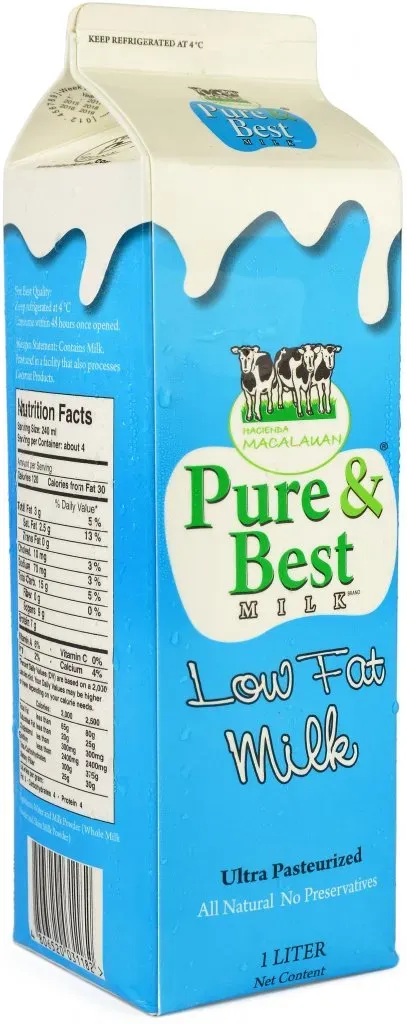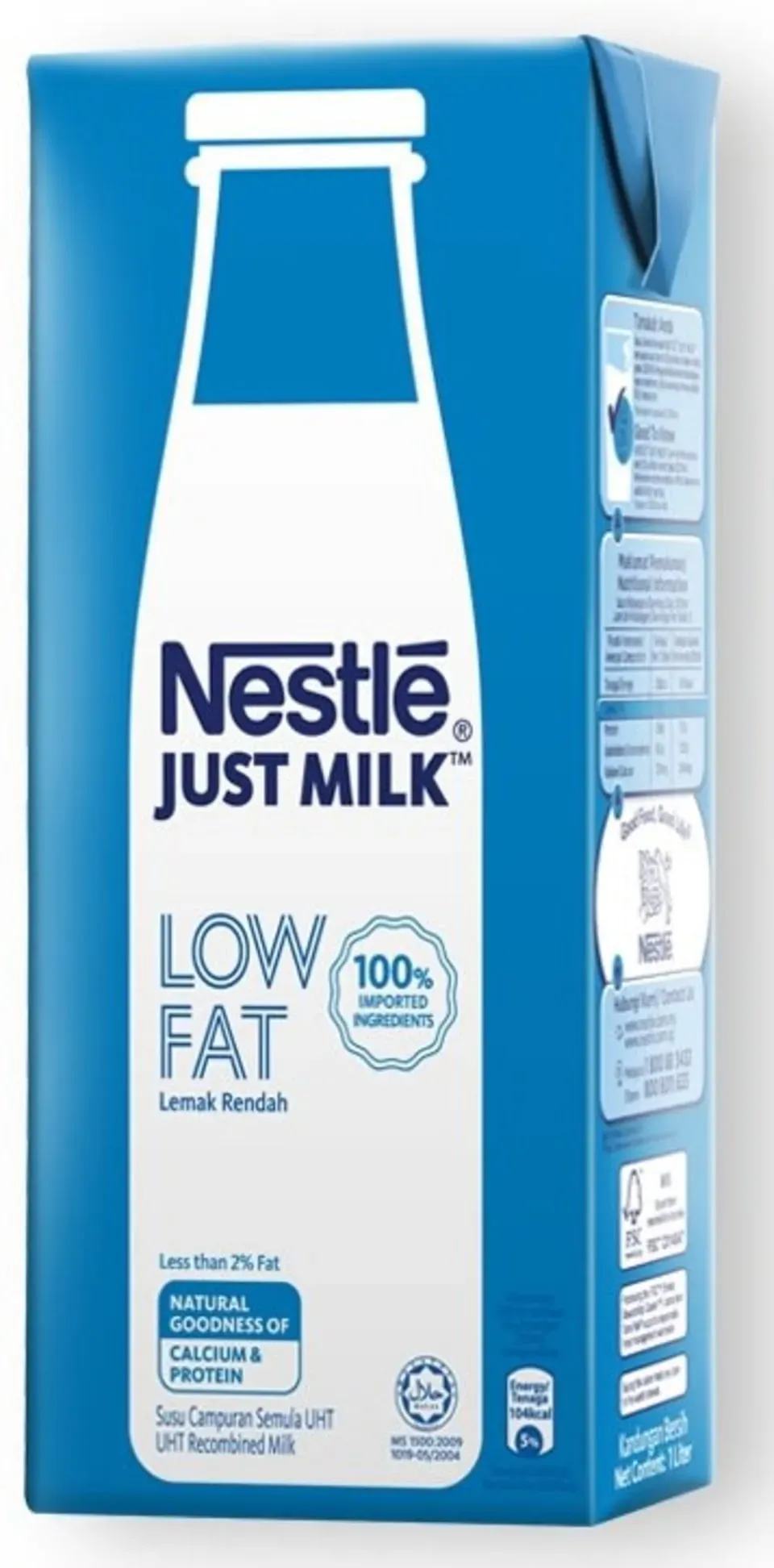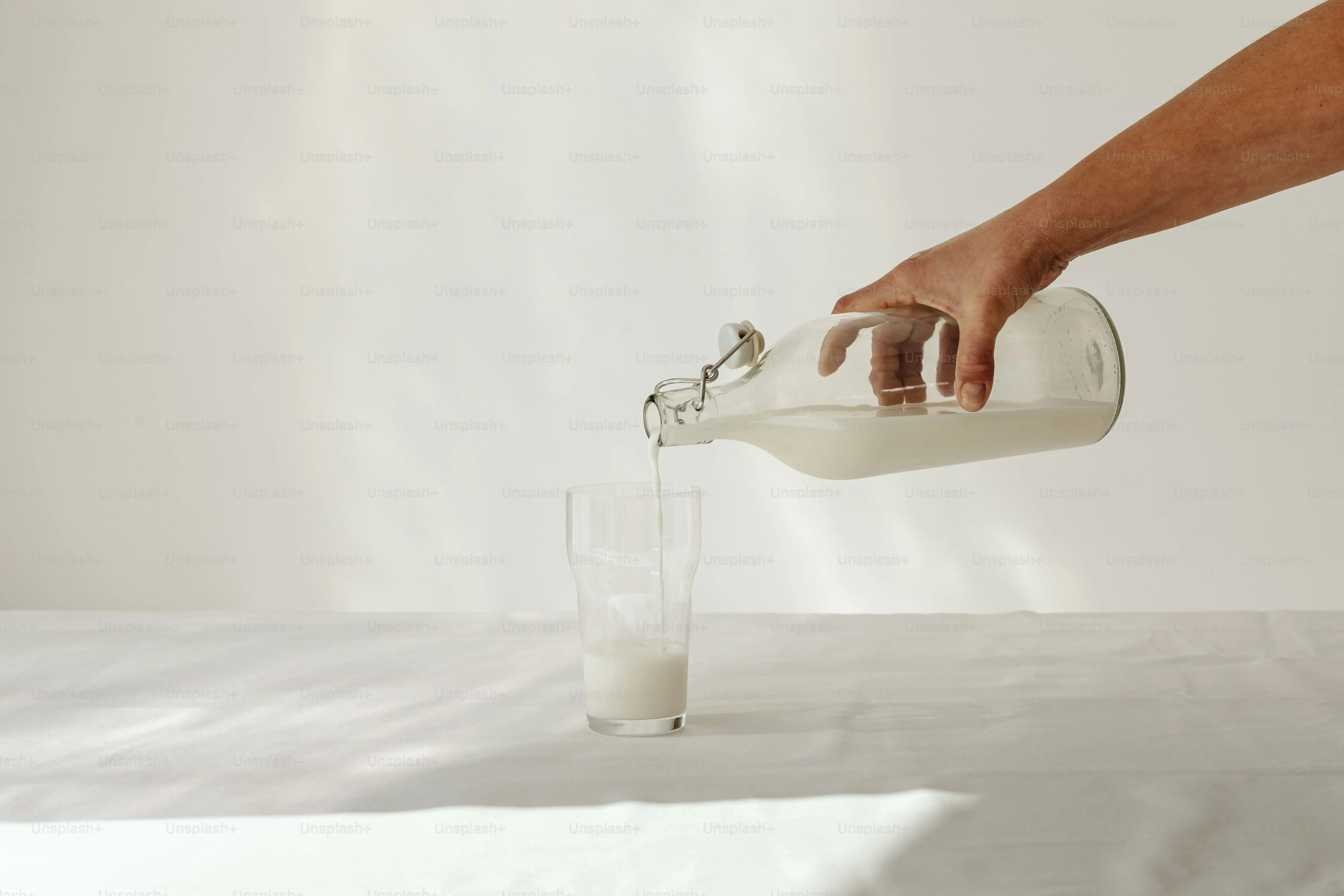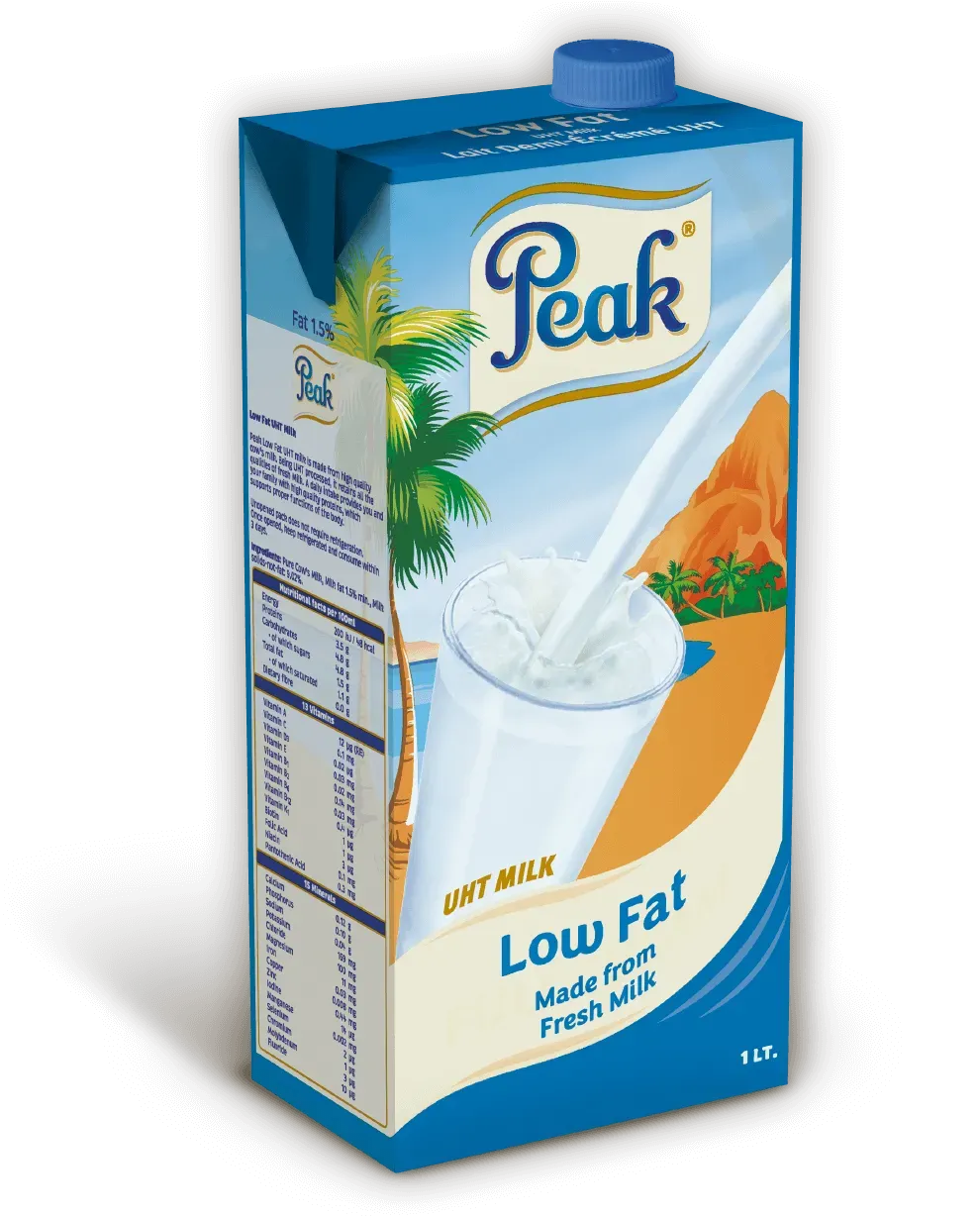Table of Contents
Walk into any grocery store these days and the milk aisle looks less like a simple dairy case and more like a global summit of liquids. Gone are the days when your biggest decision was whole or skim. Now you're faced with a dizzying array of options, each promising something slightly different. For many, the goal is finding something lighter, something that fits a lower-fat diet without sacrificing taste or nutrition. But with so many cartons vying for attention, how do you figure out what's actually worth pouring into your cereal or coffee? Trying to pinpoint the best low fat milk can feel like navigating a nutritional maze blindfolded. Is it just about the fat grams listed on the carton? What about protein, vitamins, or even how it feels in your gut? This article cuts through the marketing speak to look at what makes a low-fat milk stand out. We'll explore the contenders, from traditional cow's milk options to the ever-expanding world of plant-based alternatives, and help you understand the real differences. Let's figure out which carton truly holds the best low fat milk for your fridge.
Why People Seek LowFat Milk Options

Why People Seek LowFat Milk Options
Cutting Down on Calories and Fat
so why are so many people reaching for that blue or red cap instead of the full-fat goodness? Honestly, a big driver is often calorie reduction and managing fat intake. Whole milk packs a decent punch in the calorie department, mostly from fat. Switching to 1% or skim milk immediately drops those numbers. It's a simple swap that feels like an easy win if you're counting calories or trying to lower saturated fat for heart health. Think of it as looking for a minor adjustment that can have a ripple effect on your overall diet. For decades, dietary guidelines hammered home the message about limiting fat, especially saturated fat, and that advice stuck with a lot of people. So, seeking out low-fat milk options became a standard practice, a cornerstone of what many considered a "healthy" diet.
Beyond the Numbers: Digestion and Taste
But it's not just about the nutrition label for everyone. Sometimes, it's about how milk makes you *feel*. For some, the richness of whole milk can feel a bit heavy or even cause digestive discomfort, even if they aren't fully lactose intolerant. Low-fat versions can simply feel lighter in the stomach. Then there's the taste and texture. While some miss the creamy mouthfeel of whole milk, others prefer the cleaner, less coating sensation of skim or 1%. It really comes down to personal preference, what you're using the milk for (cereal? coffee? baking?), and what your body tolerates best. It's a mix of perceived health benefits, dietary habits ingrained over years, and simply what tastes and feels right.
So, why the move towards the lighter side of the milk aisle?
- Calorie reduction goals
- Desire to lower saturated fat intake
- Following traditional dietary advice
- Preference for a lighter texture or taste
- Potential for easier digestion compared to whole milk
- Exploring alternatives due to health recommendations or trends
Cow's Milk: Which is the best low fat milk?

Cow's Milk: Which is the best low fat milk?
Skim vs. 1% vs. 2%: The Dairy Showdown
let's talk about the OG low-fat options: cow's milk. For decades, if you wanted less fat, you grabbed the skim (fat-free), the 1%, or maybe the 2%. They all start as whole milk, and the fat is simply removed to varying degrees. Skim milk is the leanest, aiming for virtually no fat. 1% milk leaves just a tiny bit of fat behind. 2% milk, sometimes confusingly called "reduced-fat," still has a noticeable amount compared to skim or 1%, but significantly less than whole milk's roughly 3.25%. Nutritionally, they are otherwise quite similar when it comes to protein, calcium, and added Vitamin D. The main difference you're paying for (or not paying for, in the case of skim) is the fat content and the calories that come with it.
Defining "Best": It's Not Just About Fat
So, among these traditional choices, which one is truly the best low fat milk? If your *only* metric is the lowest possible fat and calories from fat, then skim milk wins, hands down. It's the closest you get to just protein, carbs (lactose), and micronutrients without the creamy fat. However, "best" isn't always just about one number. Some people find skim milk too watery, lacking the mouthfeel they expect from milk. This is where 1% or even 2% comes in. They offer a slight return of that creamy texture and richer taste while still being considerably lower in fat than whole milk. It's a trade-off: a little more fat and calories for a potentially more satisfying sensory experience. The "best" really depends on your personal taste preference and how strictly you're tracking fat intake.
Here's a quick look at how they stack up per 8-ounce serving (approximate values):
Type of Milk | Calories | Total Fat (g) | Protein (g) |
|---|---|---|---|
Skim Milk | 80-90 | 0-0.5 | 8 |
1% Milk | 100-110 | 2.5 | 8 |
2% Milk | 120-130 | 5 | 8 |
Plant Milks: Are They the best low fat milk Alternatives?

Plant Milks: Are They the best low fat milk Alternatives?
The Rise of the Non-Dairy Aisle
Alright, so we've dissected the cow's milk options. But what about the explosion of plant-based drinks? Walk down that same aisle, and you're hit with almonds, oats, soy, cashews, coconuts, hemp, rice... the list keeps growing. Many people turn to these not just for lower fat, but due to lactose intolerance, dairy allergies, environmental concerns, or vegan lifestyles. Often, the marketing leans heavily on "light," "low calorie," or "unsweetened," which naturally makes you wonder if one of these could be the best low fat milk alternative for you. They certainly offer variety, but are they truly comparable when you look past the headline claims?
Comparing Fat Profiles: Not All Plants Are Equal
When you start comparing plant milks head-to-head on fat content, it gets interesting. Unsweetened almond milk, for example, is notoriously low in calories and fat, often boasting around 30-40 calories and 2.5-3 grams of fat per cup. That looks promising if you're solely chasing low fat. Oat milk, depending on the brand and formulation, can vary quite a bit but often lands somewhere in the middle, perhaps 120 calories and 2.5-5 grams of fat, sometimes higher for "full-fat" barista blends. Soy milk is often closer to 1% or 2% cow's milk in terms of fat and calories, sitting around 100-120 calories and 3.5-5 grams of fat. Then you have coconut milk beverage (the stuff in the carton, not the canned cooking stuff), which can be low in fat (around 45 calories, 4g fat), but often lacks protein. Hemp milk usually has a bit more fat, maybe 60-80 calories and 5-8 grams of fat, but brings some omega fatty acids to the party. So, while many *can* be low in fat, you absolutely have to check the label. "Plant-based" doesn't automatically equal "low-fat."
Plant Milk (Unsweetened) | Approx. Calories (per 8oz) | Approx. Total Fat (g) | Approx. Protein (g) |
|---|---|---|---|
Almond Milk | 30-40 | 2.5-3 | 1 |
Oat Milk (Standard) | 120-130 | 2.5-5 | 2-3 |
Soy Milk | 100-110 | 3.5-5 | 7-8 |
Coconut Milk Beverage | 45-50 | 4-4.5 | 0-1 |
Beyond Fat: Nutritional Trade-offs
many plant milks can compete with cow's milk on sheer fat grams, especially unsweetened almond or coconut. But can they truly be considered the best low fat milk *alternatives*? This is where things get nuanced. Cow's milk naturally provides a robust package of protein, calcium, Vitamin D (often added), and B vitamins. Many plant milks, particularly almond and rice, are naturally quite low in protein and other nutrients. Manufacturers often fortify them with calcium and Vitamin D to make them more nutritionally comparable, but the protein content often lags significantly behind soy or cow's milk. If you're relying on your milk for protein, most plant milks won't cut it compared to dairy or soy. So, while they might win the "lowest fat" contest among alternatives, whether they are "best" depends entirely on what nutritional benefits you're prioritizing beyond just the fat count.
Finding the best low fat milk for Your Needs

Finding the best low fat milk for Your Needs
Matching Milk to Your Goals
so we've looked at cow's milk and the plant-based contenders. Now, how do you actually pick the best low fat milk for *you*? It's not a universal answer, despite what some marketing might suggest. Your personal goals matter more than any headline claim. Are you primarily trying to cut calories for weight management? Then yes, skim cow's milk or unsweetened almond milk might look like the front-runners based purely on the numbers. Are you more concerned with saturated fat intake for heart health? Again, most low-fat options from either category will fit the bill better than whole milk. But what if you're also trying to boost protein intake? Suddenly, skim or 1% cow's milk, or fortified soy milk, jump ahead of almond or rice milk. You have to be honest about what you're trying to achieve beyond just "low fat."
Taste, Texture, and How You Use It
Let's be real, nutritional profiles are important, but if you hate the taste or texture, you're not going to drink it. Finding the best low fat milk also means finding one you actually enjoy. Maybe you find skim milk too thin, almost like flavored water. Perhaps the slight sweetness of oat milk appeals to you, or the nutty undertones of almond milk. Think about how you use milk most often. Are you pouring it on cereal? Adding it to coffee? Using it in smoothies or cooking? Some plant milks curdle in hot coffee (looking at you, some almond milks), while others froth beautifully (oat milk often excels here). Skim milk might make your cereal soggy faster than 1%. These practical considerations are just as valid as the macronutrient breakdown when making your choice. It's about finding a sustainable fit for your daily routine.
Consider these factors when choosing:
- Your primary dietary goal (calories, fat, protein, vitamins).
- Whether you have allergies or intolerances (lactose, soy, nuts).
- The taste and texture you prefer.
- How you plan to use the milk (drinking, cooking, coffee, cereal).
- The overall nutritional package (fortification, added sugars).
Reading Labels Like a Pro
Once you've narrowed down the type of milk, become a label detective. This is crucial for finding the best low fat milk that isn't hiding unwelcome surprises. Always check the "Nutrition Facts" panel. Look beyond just the total fat. See the calories per serving. Crucially, check the added sugars. Some "low-fat" or plant-based milks load up on sugar to improve taste, completely undermining your health goals. Compare the protein content across different brands and types. Also, look at the fortification – is it a good source of calcium, Vitamin D, and B vitamins? Don't assume all brands of almond milk, for example, are created equal; fortification levels and ingredients can vary wildly. The ingredient list itself can tell you a lot – are there thickeners, gums, or artificial flavors you'd rather avoid? A few minutes spent scrutinizing the carton can save you from bringing home something that doesn't actually align with your definition of "best."
Beyond the Hype: What Science Says About LowFat Milk

Beyond the Hype: What Science Says About LowFat Milk
Does Low-Fat Mean Better Health Outcomes?
so we've been told for years that low-fat milk is the healthy choice, the path to a leaner physique and a happier heart. But does the actual science consistently back this up? It's not as black and white as the old food pyramids made it seem. While swapping whole milk for skim or 1% does immediately reduce saturated fat and calories, research hasn't always shown a dramatic, undeniable link between drinking low-fat dairy specifically and significantly better long-term health markers compared to moderate whole milk consumption. Some studies even suggest that the fat in dairy might not be the villain it was once painted as, with certain fatty acids potentially offering benefits. The picture is complicated by diet as a whole; someone drinking skim milk but eating donuts isn't exactly optimizing their health. It seems the context of your entire diet matters more than just this one switch.
Nutrient Density vs. Just Less Fat
When you strip fat from milk, you undeniably lower the calorie count. That's a simple fact based on fat having more calories per gram than protein or carbs. But what else happens? Vitamins A and D are fat-soluble, meaning they are removed along with the fat. Milk is often fortified with these vitamins, but it's an addition, not naturally occurring in the same way as in whole milk. So, while you get the same calcium and protein (assuming it's cow's milk), you might be missing out on some of the natural vitamin package unless it's added back. For plant milks, as we touched on, the base nutritional profile can be vastly different from cow's milk, regardless of fat content. Unsweetened almond milk might be low fat and low calorie, but it's also low protein and needs fortification to stack up on calcium and vitamins. Soy milk offers protein closer to dairy, but its fat profile is different. So, focusing only on "low fat" risks overlooking the full nutritional story.
So, what does the science nudge us towards when considering low-fat milk?
- Lowering saturated fat can be beneficial, but dairy fat's role is still debated.
- Simply reducing fat doesn't guarantee better health; overall diet is key.
- Low-fat cow's milk is often fortified to replace fat-soluble vitamins removed.
- Plant milks vary wildly in nutritional content beyond just fat.
- Consider the whole nutrient package, not just fat grams.
Choosing Your Low-Fat Champion
So, is there a single, undisputed champion for the title of the best low fat milk? Probably not, and anyone claiming otherwise might be selling something. What's clear is that "low-fat" is just one piece of the puzzle. You've got to weigh up the protein punch, the vitamin fortification (or lack thereof), how your stomach handles it, and frankly, whether you can stand the taste. Skim cow's milk offers the protein and calcium blueprint but leaves many feeling... watery. Plant-based options bring diversity but demand a closer look at added sugars and nutrient gaps. Ultimately, the best low fat milk is the one that fits your dietary needs, your digestive system, and your budget, without making you dread your morning coffee. Do a little homework, maybe try a few cartons, and trust your own judgment more than the glossy labels.
